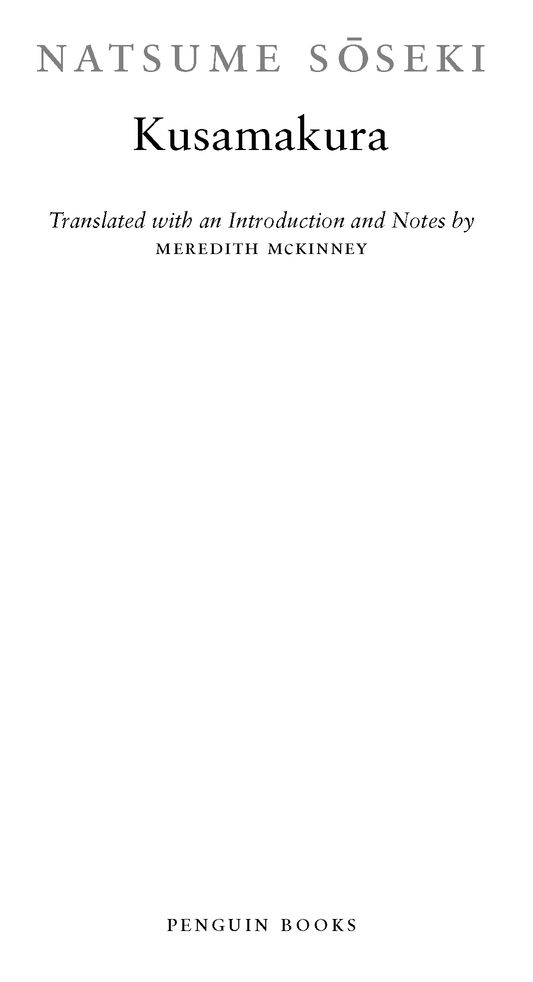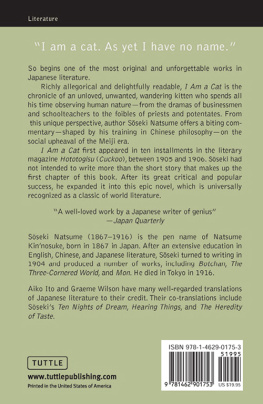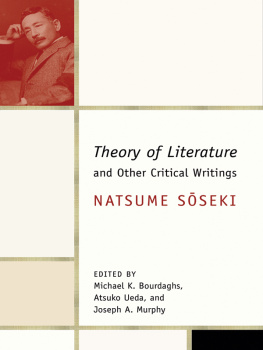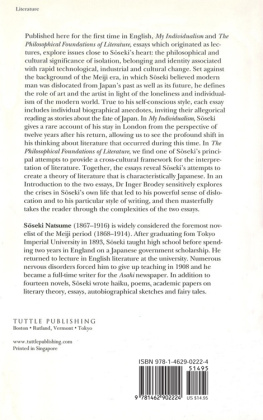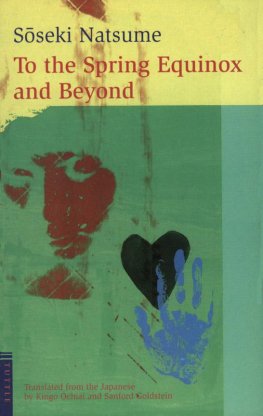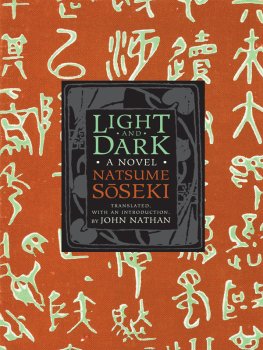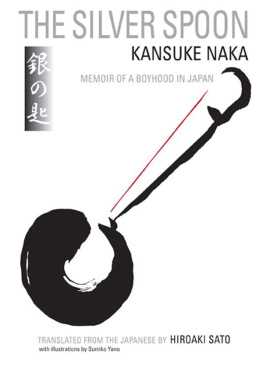Table of Contents
PENGUIN CLASSICS
CLASSICS KUSAMAKURA
NATSUME SOSEKI (1867-1916), one of Japans most influential modern writers, is widely considered the foremost novelist of the Meiji era (1868-1914). Born Natsume Kinnosuke in Tokyo, he graduated from Tokyo University in 1893 and then taught high school English. He went to England on a Japanese government scholarship, and when he returned to Japan, he lectured on English literature at Tokyo University and began his writing career with the novel I Am a Cat. In 1908 he gave up teaching and became a full-time writer. He wrote fourteen novels, including Botchan and Kokoro, as well as haiku, poems in the Chinese style, academic papers on literary theory, essays, and autobiographical sketches. His work enjoyed wide popularity in his lifetime and secured him a permanent place in Japanese literature.
MEREDITH MCKINNEY holds a Ph.D. in medieval Japanese literature from the Australian National University in Canberra, where she teaches at the Japan Centre. She taught in Japan for twenty years and now lives near Braidwood, New South Wales. Her other translations include Ravine and Other Stories by Furui Yoshikichi, The Tale of Saigyo, and, for Penguin Classics, The Pillow Book of Sei Shonagon.
Introduction
Kusamakura (1906) is an extraordinary work, written at an extraordinary time in Japans history, when the nation was tumbling headlong into the twentieth century and toward its modern miracle, even as its traditional past everywhere still haunted it. Kusamakura was conceived out of this double consciousness and embodies it in fascinating ways. It is very much a novel of its historical moment, a literary experiment that was as new and exciting as the great experiment that was Meiji-era Japan.
Until 1868, when the Meiji era began, Japan had maintained a fiercely isolationist policy that kept it culturally and politically intact for centuries. When the nation finally chose, after a brief internal struggle, to submit to external pressure and open its doors, this largely untouched world of old Japan was suddenly subjected to violent upheavals, with the immediate rush to modernize and Westernize. In Kusamakura the powerful and inexorable transforming impetus that was impelling Japan out of its past and into a very different future is embodied in the image of the steam train of the final scene hurtling blindly into the darkness ahead with its freight of hapless passengers, an image of the sinister serpent of civilization that carries the novel off into its open-ended future. In this final scene the steam train is bearing away men who are leaving to fight in the Russo-Japanese War of 1904-5, a war that had just drawn to its victorious end when Natsume Soseki wrote this work. Though written at the height of the nationalistic fervor that followed this victory, the novel portrays the war as a bloodbath whose distant echo of guns has penetrated even the idyllic peace of a mountain village that is otherwise virtually untouched by the modern world. Unlike so many of his contemporaries, Soseki had a complex and deeply uneasy relationship with the new modernity.
Kusamakura is at odds not only with the generalized euphoric embrace of modernity but also more specifically with the contemporary trends in Japans modern literature. Japanese prose writers had rushed to reject the earlier traditions and set about forging a new literature modeled on Western concepts of the novel. The Naturalism of nineteenth-century French writers such as mile Zola provided the model for works that aimed at a gritty realism and an emphasis on human entanglements. Soseki, however, instinctively rebelled against this unthinking rejection of Japans native literary tradition and the focus on the more squalid aspects of the human world. Kusamakura is his attempt at an answer to this literary vogue, reaching back into Japans literary past to bring its riches to bear on the possible evolution of the new Japanese novel.
Soseki was in an ideal position to seek a new literary synthesis of East and West. Natsume Kinnosuke (Soseki was his nom de plume) was born in 1867, the final year of the old regime, into a family of minor bureaucrats whose fortunes declined rapidly with the onset of the Meiji era. A late and unwanted child in a large family, he was adopted the following year by a childless couple, then returned nine years later, when the couple divorced, to his parents (whom he believed to be his grandparents). This loveless and lonely childhood marked him with a sense of estrangement and dislocation that haunted him through his adult years and that echoed the dislocations and questioning of identity that were hallmarks of Meiji-era Japan.
Sosekis education too epitomized the split consciousness of his time. As a child, he was given a traditional education with a strong grounding in the Chinese and Japanese classicshis love of this rich literary tradition is a constant presence in Kusamakura and to a lesser extent in everything he wrote. A bright student, he later chose to concentrate on the study of English, which was an important prerequisite for a scholarly career, and at Tokyo University he majored in English literature, but the classics remained his first and deepest love. Here again he was haunted by a sense of dislocation between his inheritance and the world in which he found himself, which he embraced with an unwilling fascination. Where others were throwing themselves indiscriminately into the huge experiment of modernization, with a largely uncritical adulation of Western culture and its values, Soseki studied it carefully and was impressed and intrigued by it but found himself unable to embrace it wholeheartedly. He belonged to neither world and to both, and this uneasy, complex identity informs his writing, making him a uniquely Meiji voice.
Once he graduated, Soseki took up a series of teaching posts, although he felt himself to be more scholar than teacher. During the following years he moved first to a school in Matsuyama in Shikoku (where he married) and then to Kumamoto in Kyushu. While there he paid a visit to the nearby hot spring village of Oama, which evidently formed the basis for his depiction of Nakoi in Kusamakura. Kumamoto was far from Tokyo, and such small villages at the turn of the century would still have preserved virtually intact the traditional Japan that was Sosekis first inheritance and love. Perhaps the visit to Oama stayed in his imagination as the epitome of a brief journey into the apparently idyllic past, to set against the stresses and alienation of life in modern Japan. Although he had not yet begun to write, Soseki was already absorbing themes and material for his later novels.
In 1900 the Japanese government provided Soseki with a scholarship to study in England for two years, part of its design to send promising scholars abroad to bring back an informed understanding of key aspects of Western civilization. Unwillingly, Soseki set sail for London, leaving behind his wife and baby daughter. The two years that followed were probably the unhappiest of his life. He was poor, he was intensely lonely, and he found nothing to love about the English or their way of life. England was aesthetically depressing for himwe can guess that the occasional criticisms of England scattered throughout


 CLASSICS
CLASSICS